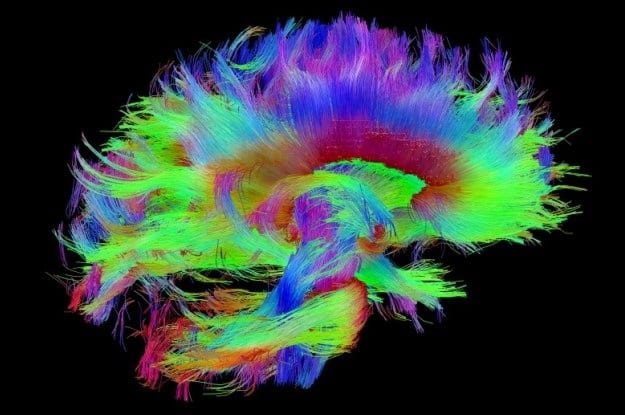Topic:
Common brain abnormalities are found in multiple emotional disorders such as major depressive disorder, bipolar disorder, social anxiety disorder, obsessive-compulsive disorder (OCD), and posttraumatic stress disorder (PTSD). This summary works to explain the two, connected research studies done by the University of Illinois to find a shared brain abnormality that connects emotional disorders.
Hypothesis:
Since most emotional disorders occur together (for example having both anxiety and depression) and there are similar treatments for these disorders, it is likely that there is a common brain abnormality.
Study #1:
Goal of the Research:
Try to identify a common brain abnormality within patents that have different emotional disorders.
Method:
Use MRIs (magnetic resonance imaging) as a non-invasive way to view and analyze the white matter of the brain. Since the white matter is the part of the brain that includes long nerve fibers that can transmit electrical signals (essentially the communication lines for your entire brain), it is the best place to focus on.
Results:
There was a common disruption in the area of the brain known as the “default mode network.” This part of the brain is responsible for passive/unfocused thoughts. When this part of the brain is overstimulated, or hyperactive, it brings forth constant negative thoughts. This can be a cause of the negative thoughts associated with emotional disorders.
What can we learn from this research?
If there is a common brain abnormality that is found in many emotional disorders, biomarkers could be used to flag and reveal emotional disorders in new, non-diagnosed, patients. This would make identifying emotional disorders faster, and it would hold the potential for better treatment possibilities since there would be a target area for medication.
Study #2:
Goal:
Look through past research in 37 similar studies to determine if there are significant similarities and differences between emotional disorders within the “default mode network.” This is essentially a meta-analysis which is a summary of numerous related studies, but no lab/patient research is done.
Method:
Use DTI (diffusion tensor imaging) to measure how water moves throughout the brain. Tracking water movement allows for one to map the connections in the brain in the white matter. Areas of high connectivity have a larger water flow than other areas and suggest strong communication between those brain areas, indicating a healthy brain. Areas of low water movement show weak communication and potentially the cause of a disorder.
Results:
Althought the “default mode network” seems to be hyperactive in people with emotional disorders, it actually has less water movement than non-emotional disordered patients. This is likely due to the fact that the connections to the “default mode network” work as off switches. This means that when the brain is thinking negative thoughts, it tries to stop them through an electrical signal. When there are weak connections, these signals do not always work which leaves the “default mode network” active.
OCD has many similar connections when compared to other emotional disorders. This suggests that OCD could be, and likely should be, considered an emotional disorder that should also be treated as such.
PTSD is least like other emotional disorders as it actually consists of more brain areas with less water movement. This different could be due to severe trauma that caused the disorder itself.
Bipolar disorder had less water movement on both sides of the brain whereas other emotional disorders showed less movement on the left side only. When considering that the right side of the brain is highly linked to external focus, as in mania, and the left side of the brain is highly linked to inward focus, as in depression, it makes sense that those with bipolar disorder have a reduction of water movement on both sides of the brain.
What we can learn from this study:
Using DTI to analyze someone with bipolar disorder could show whether they are more susceptible to mania, depression, or both.
Conclusion:
There does seem to be a common abnormality in the “default mode network” area of the brain. This part of the brain relates to passive thoughts, and a hyperactive “default mode network” is realted to numerous emotional disorders. Upon further research, it was shown, through DTI, that there is not much water movement in this part of the brain which tells us that this part of the brain may have a difficult time shutting off, leading to constant negative thoughts.

